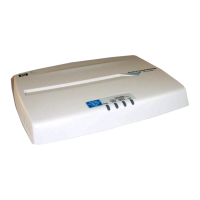
 Loading...
Loading...
Do you have a question about the HP 530 and is the answer not in the manual?
| Graphics | Intel GMA 950 |
|---|---|
| Processor | Intel Core Duo T2050 |
| RAM | 512 MB, upgradable to 2 GB |
| Storage | 80 GB HDD |
| Display | 15.4-inch WXGA (1280 x 800) |
| Operating System | Windows XP Professional |
| Battery | 6-cell Lithium-Ion |
| Optical Drive | DVD+/-RW |
| Ports | 3 x USB 2.0, 1 x VGA, 1 x RJ-45, 1 x RJ-11, 1 x Headphone, 1 x Microphone |
| Wireless | 802.11a/b/g |
Introduces the guide and applicable products.
Guides on configuring IP addressing using the CLI for quick setup.
Explains CLI, Web browser, and SNMP interfaces for managing the access point.
Details the benefits and usage of the Command Line Interface for configuration.
Describes methods for accessing the CLI via console, Telnet, or SSH.
Emphasizes setting a strong manager password to secure access to the CLI.
Explains how to initiate a web browser session using IP address or DNS name.
Explains how to change the management password to enhance access security.
Details how to change the administrator password for secure management access.
Introduces SNMP for network management and the access point's support for versions 1, 2c, and 3.
Explains the importance of setting the country code for authorized radio channels and regulatory compliance.
Explains how to separate wireless traffic for different user groups using multiple SSIDs on a single access point.
Explains wireless security concepts: open system, authentication, encryption, and key management.
Provides access to security options via the WLANs tab and explains basic parameter configuration.
Explains QoS technologies for controlling traffic and the IEEE 802.11e standard for wireless networks.
Introduces Identity-Driven Management (IDM) integrated with 802.1X for automatic network edge configuration based on user identity.
Covers basic commands like configure, end, exit, logout, ping, reload, show, terminal, and write.
Covers commands for configuring country code, hostname, domain, password manager, buttons, CLI confirmation, console, Telnet, SSH, and web-management.
Explains how to acquire and download new access point software from the ProCurve support site.
Covers copying configuration files to/from remote servers using Web UI and CLI.
Lists default settings for System Management commands like country, hostname, password manager, buttons, console, Telnet, SSH, and web-management.
Demonstrates Adaptive Transmit Power Control in an airport network scenario with SSID and RF Group Name configurations.
Provides the full text of the GNU General Public License, version 2.